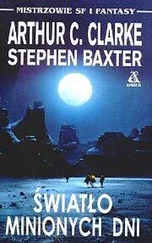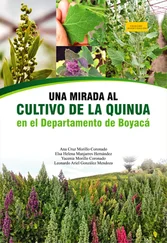Bin Laden is extremely rich himself, having been born into a prominent Saudi family, and he has close ties with wealthy Islamist sympathisers across the Muslim world. Funds are channelled to al-Qaeda from a variety of sources, including hawalas (small money-brokering operations), Islamic charities, fake companies, lightly regulated banking centres (e.g. Dubai and Liechtenstein) and commodities such as Angolan diamonds or Afghan opium, which can be transported easily and traded for cash or weapons. Identifying the sources of funding for al-Qaeda and other Islamic militant groups is a major aspect of counter-terrorism operations against them.
‘We love death. The US loves life. That is the difference between us two.’
OSAMA BIN LADEN , November 2001
Banking
What do commercial banks do?
Commercial banks, which include high street banks and building societies, operate a fairly simple business model: they borrow money from depositors (those who open an account at the bank and deposit money in it) at low rates of interest, and make a profit by lending it out at higher rates of interest. The sorts of loans offered by banks vary, and include business loans,
overdrafts, career-development loans, and mortgages (in which building societies specialise). Banks must keep hold of a certain amount of money (the ‘cash reserve ratio’, set by the government) in case depositors wish to withdraw their money. It is vital that banks manage their risk well; some of their riskier loans may default, so banks must set their rates of interest carefully to allow for this and still remain profitable.
What do investment banks do?
Broadly speaking, investment banks help raise capital for clients by investing their money (corporate finance), manage company takeovers (mergers and acquisitions) and trade securities in the global markets. Securities are financial products that are tied to the value of an underlying asset (see Stocks and Bondsand Hedge Funds). Investment banks can structure and sell new and complex types of security, including CDOs (Collateralised Debt Obligations); these contain slices of different debts of varying risk, some of which may be ‘mortgage-backed’ (see Credit Crunch). Investment banks also seek to profit from trading in the foreign exchange markets and insure other people’s bonds against default by issuing Credit Default Swaps. Investment banks do a lot of lending and borrowing between themselves, lending to each other at a rate of interest known as the LIBOR (London Interbank Offered Rate), which is adjusted on a daily basis.
What was the Glass-Steagall Act?
This was legislation passed in 1933 to separate commercial and investment banking practices in the US. It was introduced after the Wall Street Crash to regulate the banking system and to protect depositors’ money from the riskier practices of investment banking. The Glass-Steagall Act was repealed in 1999, allowing for the creation of ‘universal’ banks (e.g. Bank of America), which engaged in both commercial and investment operations. Some financial commentators have recently claimed that this deregulation was one cause of the credit crunch, as it allowed former commercial banks such as Citigroup to trade in risky sub-prime mortgage-backed securities and CDOs. In 1999 Citigroup was the largest bank in the US by asset size, but in November 2008 it had to be rescued by a massive US Government bailout having lost vast amounts of money as a result of its sub-prime exposure.
What does the Bank of England do?
The Bank of England is the UK’s central bank, providing banking services both to the government and to the banking system. Its job is to maintain financial and monetary stability in the UK economy (‘financial’ relates to finance, which is the commercial activity of providing funds and capital, whereas ‘monetary’ refers to the amount of money in circulation, its rate of growth and interest rates). The Bank of England issues banknotes, acts as ‘lender of last resort’ for the other banks, and controls the UK’s gold and foreign exchange reserves. The Bank became independent from the government (which had nationalised it in 1946) in 1997, since when it has been responsible for setting UK interest rates. Its Monetary Policy Committee adjusts interest rates to keep inflation in line with the Chancellor’s annual inflation target stated in the Budget, which is based on the Consumer Price Index.
How do interest rates affect inflation?
Inflation is a general increase in prices across the economy. It is estimated with either the Retail Price Index (RPI) or the Consumer Price Index (CPI), which are calculated by adding together the prices of a selection of goods and services (exactly which ones differ in each index). Inflation occurs when demand (the amount of money being spent in the economy) exceeds supply (the goods and services produced by the economy); this creates competition for goods and services, which pushes prices up. A small amount of inflation is normal in a growing economy, but the Bank of England adjusts interest rates to ensure inflation remains low and stable in order to achieve price stability.
Interest rates control the price of borrowing and the value of saving—if they are low, borrowing is cheap and saving is not especially worthwhile, but when they are high, borrowing is expensive and saving more worthwhile. Adjusting interest rates therefore influences consumers’ spending habits, and controls the demand for goods and services—if demand far exceeds supply, interest rates can be raised to discourage spending and lower demand, whereas if supply exceeds demand (which could cause a general lowering of prices known as deflation), or demand is lower than usual (for example during a recession), interest rates can be lowered to encourage spending. In January 2009, to encourage spending to combat the recession brought on by the credit crunch, the Bank lowered interest rates to 1.5%—the lowest in the Bank’s 315-year history—then lowered them again in February, to 1%, and then again, in March, to 0.5%.
‘It is well enough that people of the nation do not understand our banking and monetary system, for if they did, I believe there would be a revolution before tomorrow morning.’
HENRY FORD , US car tycoon
Basque Country/ETA
Where is it?
The Basque Country is a rugged and beautiful region of northern Spain and south-western France that straddles the Pyrenees and borders the Bay of Biscay. It is made up of seven provinces—four in Spain and three in France—and is a popular tourist destination that includes cities such as Bilbao and Pamplona, and the seaside resorts of Biarritz and San Sebastián. The Basque people are one of Europe’s most ancient ethnic groups, and they have fought hard to hold on to their culture and land over the centuries. Their language, Euskara, is one of the oldest in the continent, and isn’t related to any other. The French Basque region (Pays Basque) has mostly avoided the violent struggle for independence associated with its Spanish equivalent (País Vasco).
Compared to most other nations in Western Europe, Spain is remarkable for its decentralised system of government. The 1978 Constitution, which marked the return to democracy following Francisco Franco’s fascist dictatorship, allowed Spain’s local regions to become ‘autonomous communities’ with their own government and parliament, ruling themselves with differing degrees of independence from the central government in Madrid. There are now 17 of these autonomous communities, including Andalusia in the south, Catalonia in the north-east and the Basque Country in the north (this is composed of three of the four Spanish Basque provinces, while the remaining province, Navarre, is a separate autonomous community). The Basque Country currently enjoys the highest level of autonomy, with education and tax collection among the responsibilities of the region’s parliament.
Читать дальше












